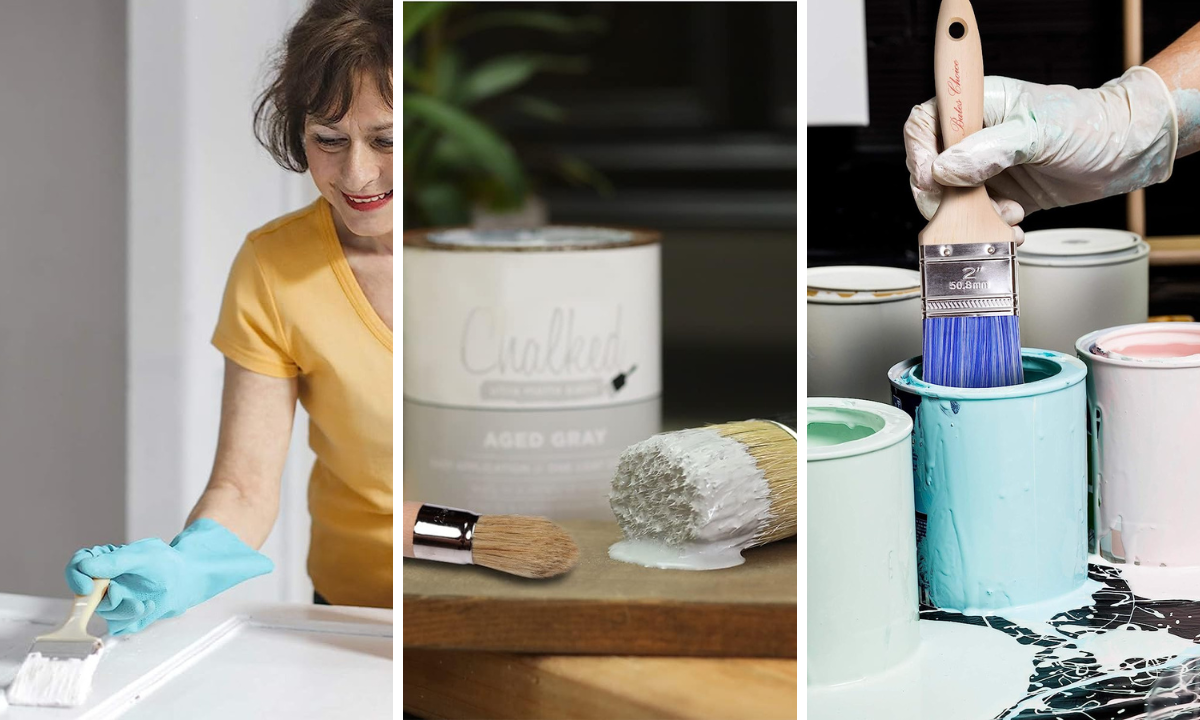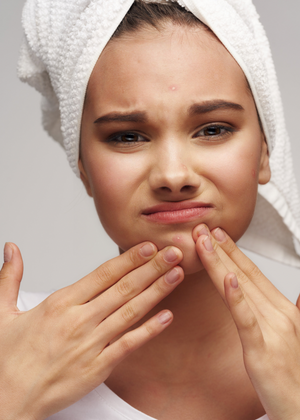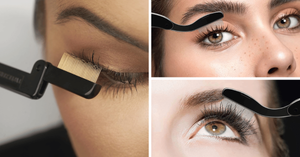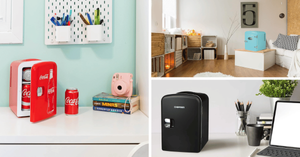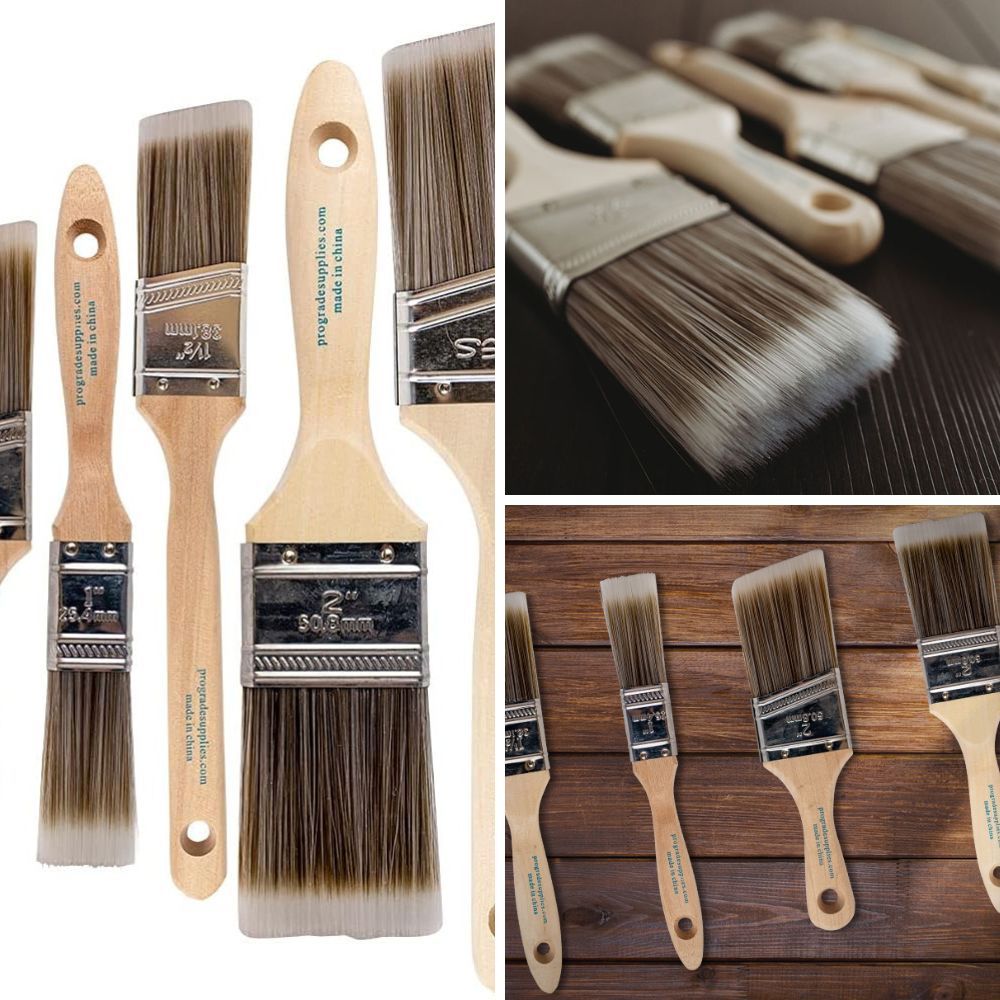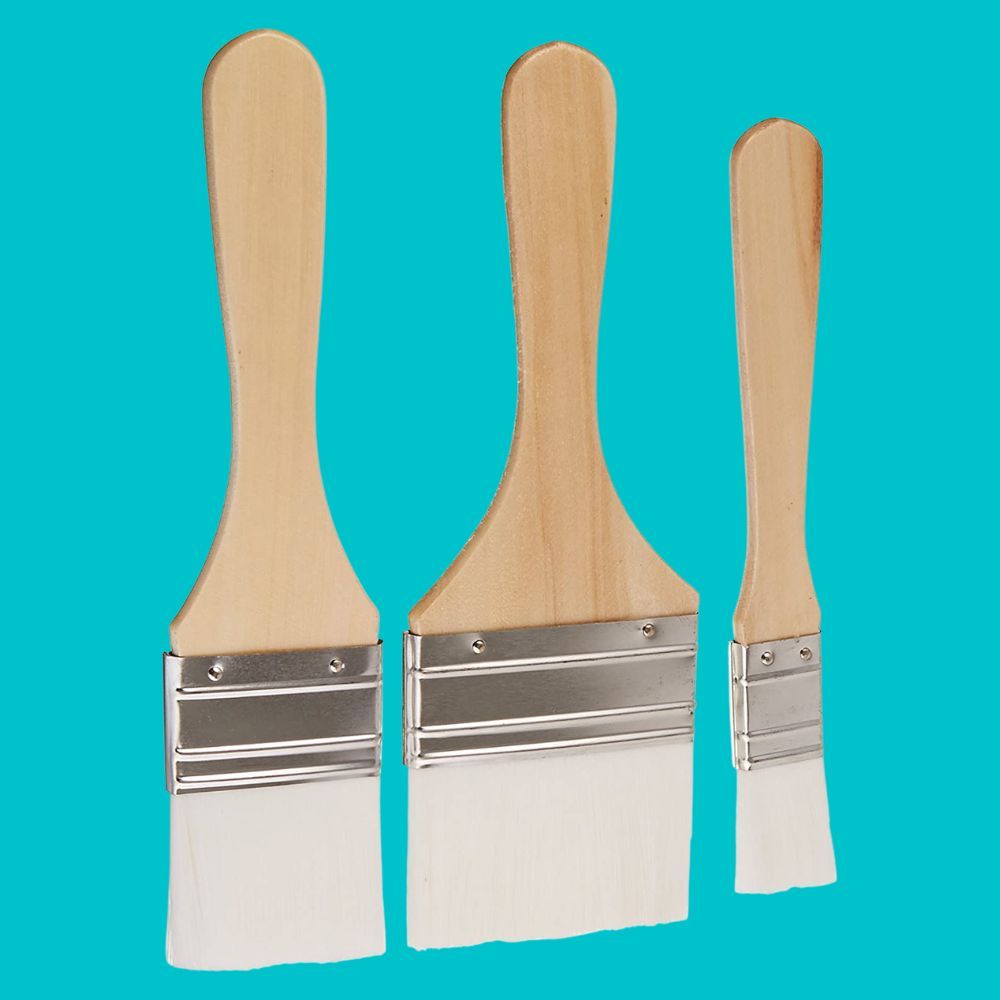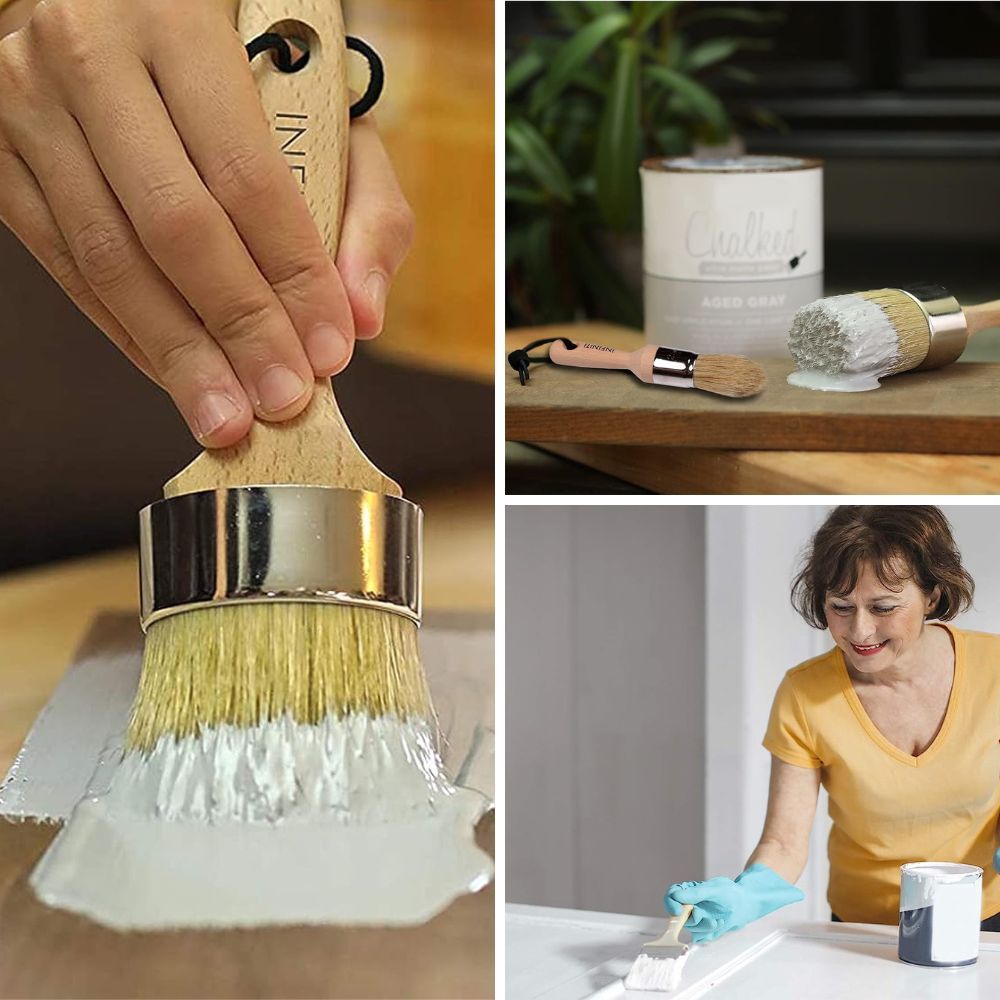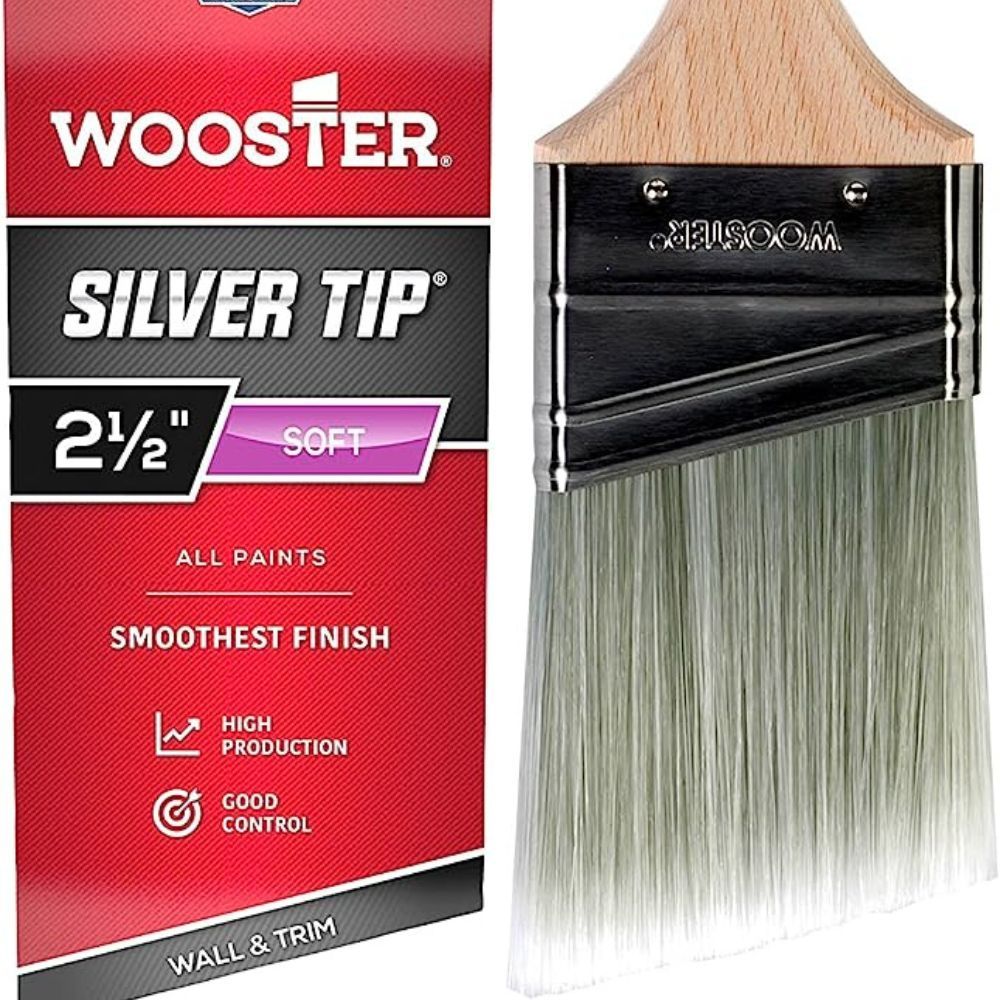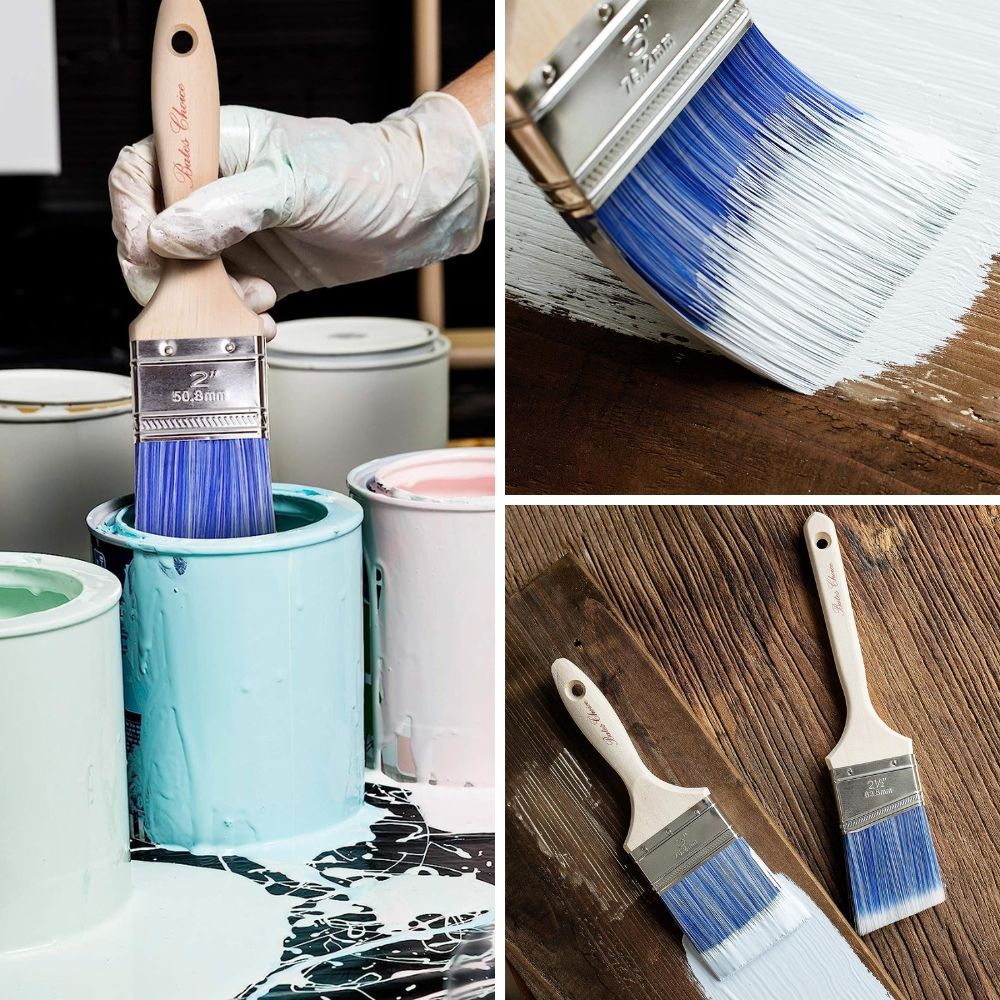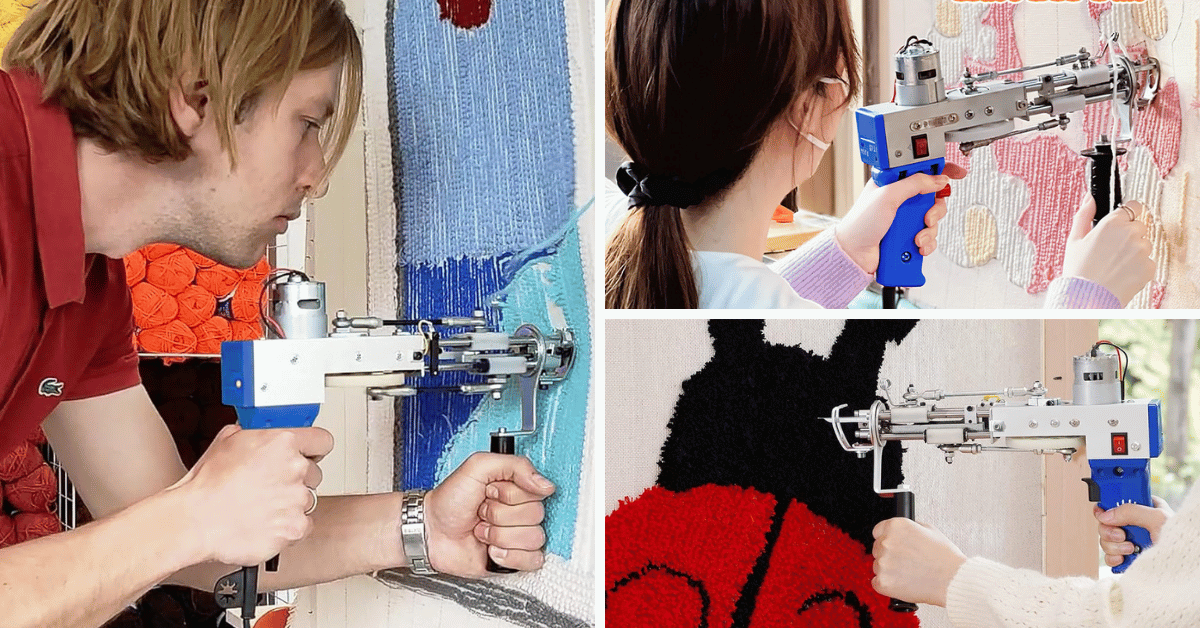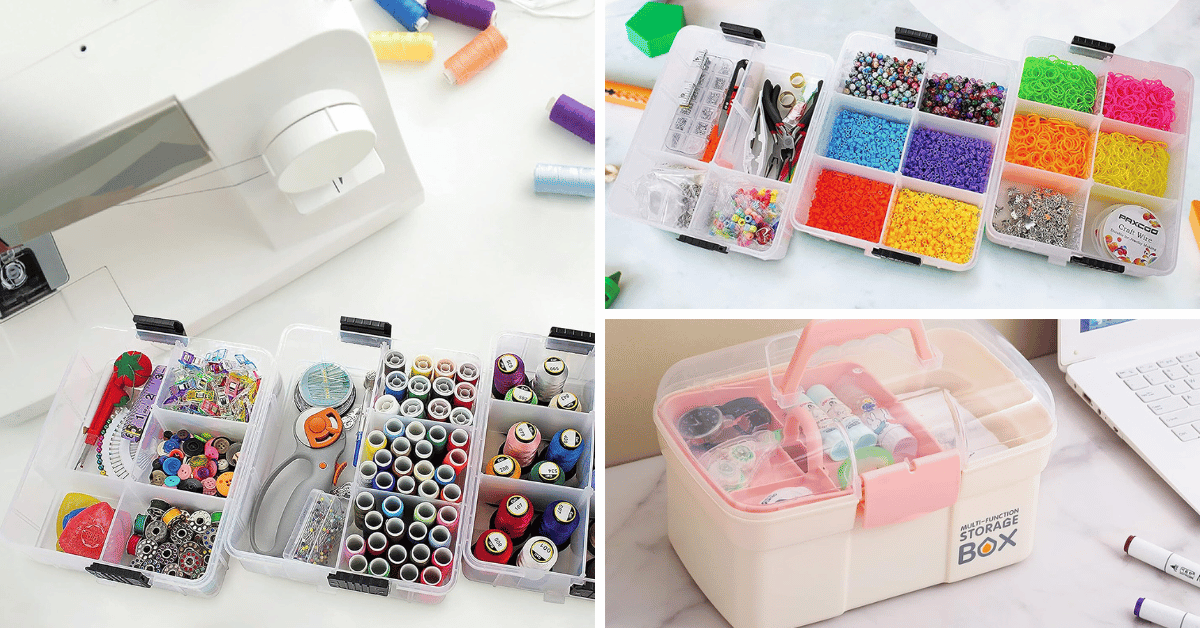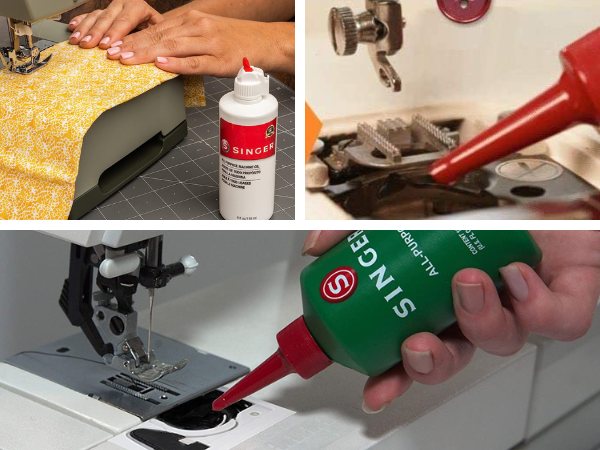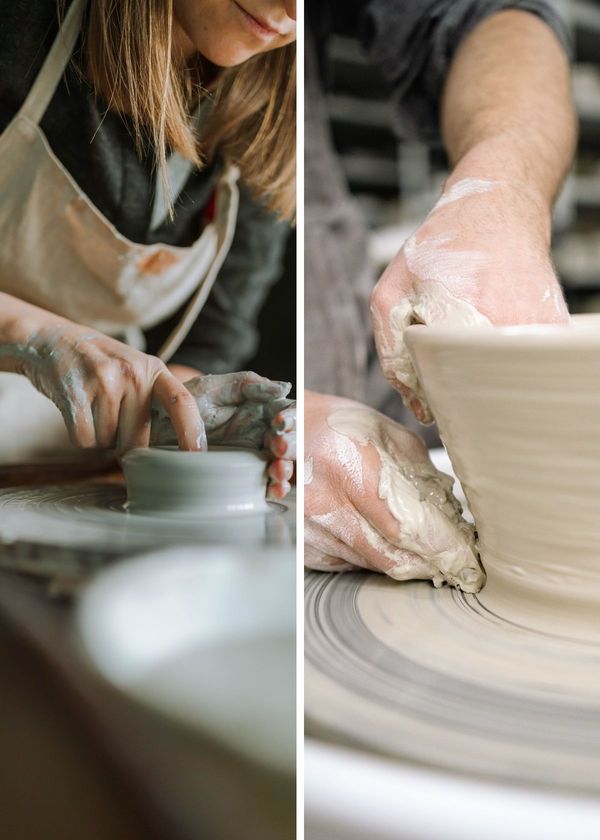Unsure of which paintbrush to buy for your next painting project?
With this guide to choosing the right brush, we'll ensure that you never miss a stroke!
From natural bristles to synthetic fiber, we've got all the tips and tricks you need to make sure your brushes are up for any challenge.
So take out those cans of carefully chosen colors and let's get started!
We're confident that with our help, you'll be able to complete any painting project - big or small.
How We Choose
Choosing the best paint brush can be really hard.
There are so many different types and sizes!
It's easy to feel overwhelmed when you're trying to choose the best paint brush.
With so many different shapes and sizes, it's hard to know which one is right for the job.
We've done the hard work for you! After reading through thousands of reviews on Amazon, we've compiled a list of the best paint brushes money can buy.
Whether you're painting a small room or a whole house, we've got you covered.
Wondering Why We Love It
Have you been eyeing those perfect, professional paint jobs completed by the pros but don't know where to start?
Oh, it's so easy when you have a set of Pro Grade paint brushes!
With this budget-friendly deluxe set you get five of our finest quality brushes for any interior or exterior job.
Whether it's some touch ups around your home or a masterpiece at an art & craft show, these beauties will get the job done!
Say goodbye to streaks and sloppy lines with our angle sash brush.
And trust us – there's nothing worse than making a mess of your walls or trim.
So don't let cheap brushes ruin your project – choose Pro Grade and get the most out of your painting endeavor with each brush stroke!
Wondering Why We Love It
Welcome to the world of effortless DIY projects!
If you want your home to look and feel like a masterpiece, then our Plaid - Nylon Chip Brush Set is exactly what you need.
Forget buying multiple brushes, this brush set works on most any surface and with its convenient reusability, will have your projects looking brand new every time!
Use it for base-coating, give it a quick wash with soap and water when wet, and keep on going as if nothing ever happened.
Get creative without all of the extra fuss - Plaid - Nylon Chip Brush Set brings out the artist in everyone.
Wondering Why We Love It
Create your own masterpieces right at home with the INFINITI ELEMENTZ Chalk and Wax Paint Brush!
This amazing brush set is all you need to upgrade your DIY projects with ease.
Perfect for base-coating, the best part is that it's reusable - simply give it a quick soap and water rinse when wet and it's ready to go again!
Forget about needing extra and unnecessary items, this one brush set can do it all.
Make sure that your project always looks brand new thanks to its convenient reusability.
Get creative without all the fuss and let out your inner artist - why not turn any regular old surface into a long-lasting masterpiece?
No more worrying about buying multiple brushes, just hop on board The Express Train of Creativity with the INFINITI ELEMENTZ Chalk and Wax Paint Brush Set!
Wondering Why We Love It
Introducing the Wooster Paintbrush: Make a bold statement without saying a word with this amazing brush!
Perfect for finishing jobs large and small, the Wooster Paintbrush is designed to make painting smoother and more enjoyable.
Its silver tip, 2-1/2" angle sash, white & silver chisel trim polyester, and very soft formulation create an unmatched feather stroke finish.
Plus, the brushed steel ferrule adds an extra shine that cannot be matched by other products.
And finally, the satin ferrule will ensure long lasting rust resistance to ensure you get maximum use for your investment.
Trust us when we say that you won’t find a higher quality paintbrush than the Wooster White China Bristles Paint Brush—it's simply impossible!
So pick one up today and experience painting perfection like you've never seen before!
Wondering Why We Love It
Looking for high-quality paint brushes without breaking the bank?
Try Bates Paint Brushes!
This set of two paint brushes includes a 3-inch flat brush and a 2.5-inch angled one, giving you the perfect size options no matter what project you're tackling.
The wood handles are treated to be lightweight and easy to hold, while the synthetic filaments are designed to hold more paint so it goes further.
With these brushes in your painting arsenal, you won't have to settle for a short-lasting brush that won't do the job right.
Your money won't be wasted anymore—these top-notch brushes are affordable enough for anyone's budget and provide an unbelievable value for their price tag.
Whether you're a seasoned pro or just starting out with painting, Bates Paint Brushes are ideal for any user.
Get your set today and start mastering your favorite paintings!
The Conclusion
So, what's the moral of the story?
Choosing the right paint brush doesn't have to be hard.
We've saved you hours of research and browsing through Amazon reviews.
All you need to do is click the "Check the Price" button and we'll take you straight to where you can buy the best paint brushes money can buy.
So, what are you waiting for?
Go forth and purchase those perfect paint brushes!
Your walls (and your spouse) will thank you.
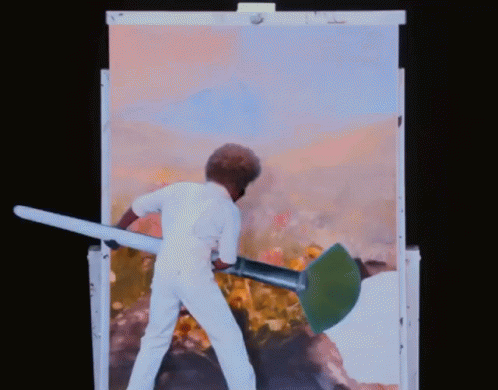
Best Paint Brush FAQ
What Are The Types Of Paint Brushes?
Paint brushes come in a wide variety of shapes and sizes, making it possible to tackle any painting job you have in mind. From synthetic and natural fibers to angled, round-tipped, or flat-headed designs, there’s a brush for just about any type of paint application imaginable.
The most commonly used types of paint brushes include the following:
1. Flat Paint Brushes - These are the most popular style for most home DIY projects due to their durability and ease-of-use. They provide even coverage with both latex and oil paint over larger flat surfaces like walls or furniture pieces. The head shape is also great for edging along trim lines or corners with precision accuracy!
2. Angle Brushes - If you need to get into tighter areas like between window frames or door hinges an angle brush might be necessary. Angled bristle heads allow the user precise control when working in tight spots while ensuring maximum coverage on hard-to-reach surfaces where other brush designs would struggle.
3. Stencil Brushes - These are perfect when you want precise patterns painted onto large surface areas such as walls with intricate detailing involved! Their formulation is designed specifically so that bristles don't leave behind unsightly streaks that can distract from the overall work being done by ittle design flakes off onto your masterpiece in this case either composition definitely has something else going on here than what meets the eye at first glance...no worries here though since these brushes typically have shorter handles which makes them easier to manage too!
4 . Foam Rollers & Jumbo Rollers - While not technically “brushes” per se foam rollers & jumbo rollers make use of porous foam material that depends on gravity alone as opposed to manual stroking effort like traditional paintbrushes do when enameled coatings need applied—these are especially helpful around surfacing such as glass wood metal etc where trying manually apply coats by hand would be next near impossible without some sorta aid device!
5 . Fan Tips & Trim Place Brushies - Specialized detailing tools wherein their bristles are created purposefully so they fan outwards slightly leaving behind unique swirling texturing effects throughout whatever artistic displays they're put up against plus another added bonus feature—they're pretty small too meaning they can slide into those smaller crevices very easily!
Which Paint Brush Is Best For Beginners?
If you’re just getting started with painting, then it can be hard to know which paintbrush is the best one for you. Here's an overview of the different types of paintbrushes and what might work best for your needs as a beginner.
For acrylics, a synthetic-bristle brush will do the trick. Synthetic brushes are typically made from either nylon or polyester fibers and offer more control over brushstrokes than natural-bristle brushes. When selecting a synthetic brush, look at its stiffness rating: higher ratings mean stiffer bristles that create firmer lines in your artwork while lower ratings make softer lines with less control. Another bonus when using synthetic brushes is their great resistance to damage caused by strong solvents like turpentine!
Oil painters may want to look into bristle (natural hair) brushes because they're better at holding large amounts of oil-based paints than synthetics are. You'll want an oil-painting set that includes several filbert (rounded) and flat brushes to get started; they'll provide plenty of coverage and be easier on your budget since they tend to come in packs with multiple sizes! A Natural bristle brush also has excellent springiness, so you can use them for blending colors together in washes or creating fine details in intricate paintings.
If you’re looking for versatility, then consider investing in a good round sable brush – these are perfect for both acrylics and oils due to their ability to hold lots of color without dripping or splaying out like some other brush options can do! And if precision is what you’re after, then try out small rounds or liners – these tiny beauties are ideal for detailed line work as well as adding thin strings onto larger surfaces like canvases seamlessly.
The type of paintbrush that works best depends largely on the type(s) of painting techniques that you plan on doing most often — so don't forget about trying out each kind before settling on one! In addition to finding something comfortable for your hands, make sure that whichever model you choose isn't too difficult or intimidating otherwise it could hurt the progress and confidence gained from practice sessions more than help it move along faster!
How Do You Avoid Brush Marks When Painting?
Avoiding brush marks when painting is not always easy, but there are a few tricks you can use to make sure your paint job looks its best. The first tip is to use good quality brushes with soft bristles that won’t leave hard-to-remove brush marks. Choose smaller brushes for more detailed areas and larger ones for wide open surfaces.
Another important tip is to load the brush only with enough paint so that you are able to cover the surface without leaving any excess behind as this will help prevent clumps of material from forming on the wall. Also, be sure not to overwork the paint into any given area - go in one direction on each stroke then gently lay off with barely touching it at the end of each stroke in order to ensure an even finish and avoid creating unsightly streaks or lines on your walls.
You should also take extra time when cutting in around edges. This means using small angled brushes or trim tool while working slowly along corners or edgings and repeatedly referring back to these points even after completing other sections of painting application elsewhere so as not leave behind obvious patches due excessive buildup of pigment near those cut ins . Additionally, do not forget about primers! Primers create a protective layer between the wall and final coat which greatly reduces absorption rates meaning less chance for visible streaks post drying times whether using acrylic paints or oil based paints .
Finally, keep at least two different sizes of clean dry cloths handy during your painting project; a large piece rag/towel should be used regularly throughout application process while dampened towel pieces may come into play after all coats have been completed – wiping away heavy smudges or dieback residue left by brushes smoother out details before they set like cement allowing painter much better control over their artwork than ever before !
What Kind Of Paint Brush Does Not Leave Streaks?
When it comes to finding the correct brush that won’t leave streaks, there are a few key features to look for. Firstly, you want to make sure that the bristles of your paint brush are tightly packed and densely formed. This will ensure an even distribution of pressure when applying the paint which leads to smoother and streak-free coverage.
Another important feature is an angled cut on the bristles. This helps create a denser tip, allowing for more control over your painting strokes, improving accuracy and preventing any unsightly streaks from forming in your finish coat. For precision work like trimming or outlining use a round tipped paint brush – this will enable you to get closer into corners without leaving telltale lines behind you!
Finally, choose quality synthetic bristles over cheaper natural brushes as these have been specifically designed with consistent performance in mind – helping keep those pesky streaks away! Softer synthetic materials such as nylon and polyester bristles provide superior results with fewer inconsistencies while also being easier on sensitive surfaces like woodwork or grainy wallpapers which can be damaged by harder bristle types like hog hair.
By taking all these factors into consideration you should be able to effortlessly pick out the perfect power brush for your project – one that won't leave any trails behind it!
How Do I Clean And Care For My Paint Brushes?
Proper cleaning and care are essential to extend the life and performance of your paint brushes. Here's how to clean and care for your paint brushes:
- Rinse Thoroughly: After each painting session, rinse your paint brushes thoroughly in warm water to remove any excess paint.
- Use Mild Soap: For acrylic brushes, use a mild soap or brush cleaner specifically designed for acrylic paints. Gently lather the bristles and rinse until the water runs clear.
- Avoid Harsh Chemicals: Avoid using harsh solvents or turpentine for cleaning acrylic brushes, as they can damage the bristles.
- Shape the Brushes: After cleaning, gently reshape the bristles with your fingers and lay the brushes flat or hang them upside down to dry. Avoid leaving them in water or standing upright, as this can cause the bristles to bend out of shape.
- Store Properly: Store your clean and dry paint brushes horizontally or in a brush holder to maintain their shape and protect the bristles.
- Prevent Drying: If you need to take a break during painting, keep your brushes in a container with a damp paper towel to prevent the paint from drying on the bristles.
By following these cleaning and care tips, you can ensure that your paint brushes remain in excellent condition, allowing you to achieve the best results in your artwork.
What Are Angled Brushes Used For In Painting, And How Do I Use Them Effectively?
Angled brushes are versatile tools used in various painting techniques. The angled shape of the bristles allows for precise and controlled application of paint in both broad strokes and detailed work. Here's how to use angled brushes effectively:
1. Cutting-in Edges: Angled brushes are perfect for cutting-in edges and painting straight lines along corners and edges, such as where walls meet ceilings or different colors meet on a canvas.
2. Creating Highlights and Shadows: The angle of the brush allows for easy blending and gradation of colors, making it ideal for creating highlights and shadows in artwork.
3. Adding Details: Angled brushes can create fine lines and intricate details, making them suitable for adding small accents and embellishments to a painting.
4. Cross-hatching and Texture: The unique bristle arrangement of angled brushes can create interesting textures and cross-hatching effects, adding depth and dimension to your artwork.
Remember to hold the brush at different angles to achieve different effects. For precise lines, use the tip of the brush, and for broader strokes, use the wide side of the bristles.
What Are Natural Bristle Brushes, And When Should I Use Them In Painting?
Natural bristle brushes are made from animal hair, typically sourced from hogs, oxen, or other animals. These brushes have a distinct texture and absorbency, making them suitable for specific painting purposes. Here's when to use natural bristle brushes:
1. Oil Painting: Natural bristle brushes are well-suited for oil painting, as they handle the thick consistency of oil paints and hold a good amount of paint for extended brushstrokes.
2. Acrylic and Watercolor Washes: In acrylic and watercolor painting, large natural bristle brushes can be used for washes and covering large areas with fluid color.
3. Textured Surfaces: The coarse and resilient nature of natural bristle brushes makes them suitable for painting on textured surfaces like canvas or rough paper.
4. Dry Brushing: Natural bristle brushes are ideal for dry brushing techniques, where minimal paint is applied to the brush for subtle and delicate strokes.
However, natural bristle brushes are not recommended for delicate work or fine details, as they have a more irregular and coarse texture compared to synthetic brushes. When using natural bristle brushes, it's essential to clean them thoroughly after each painting session and store them properly to maintain their shape and durability.


